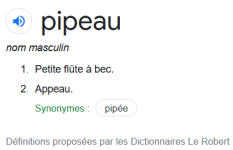"2-(3-Methoxyphenyl)-2-(ethylamino)cyclohexan1-one (methoxetamine, MXE): origins
The first of the bluelight research group’s compounds to become widely available appears to be MXE. Although theoretical properties of 2-(3methoxyphenyl)-2(ethylamino)cyclohexanone were initially described in a 2006
www.bluelight.ru thread on novel psychoactive drugs by member fastandbulbous, it was not synthesized until a few years later. After a series of positive self experiments with a variety of anisylcyclohexylamines, fastandbulbous suggested the structure of MXE to collaborator hugo24, who synthesized the compound. fastandbulbous speculated that the 3-MeO- substitution would provide an opioid analgesic effect, while substituting the N-methyl to an N-ethyl would increase duration and potency, while the 2-keto group would allow the compound to retain the relative safety and character of ketamine.
The first public report on MXE’s qualitative effects was posted by fastandbulbous on
www.bluelight.ru on 13 May 2010. Titled ‘First
Time: Heaven on Earth’, the post describes a 25-mg IM injection and praised MXE, placing emphasis on the resultant ’state of bliss‘.
The emphasis on opioid activity is an example of folk pharmacology and is based on the fact that 3-HO-PCP has high affinity for the μ-opioid receptor (MOR).[165,166] Despite the intent, 3-MeOPCP and MXE do not appear to have MOR affinity below 10,000nM.[7] Still this myth is commonly acknowledged as fact on online drug forums and has even appeared in recent peer-reviewed literature.[167] Notably, phase I metabolic demethylation of MXE does produce a 3-hydroxylated metabolite, which may exhibit MOR activity however this remains to be established.[168,169]
Immediately following the report, fastandbulbous received several inquiries regarding MXE, including one from the proprietor of a London-based RC vendor who was interested in making MXE commercially available (fastandbulbous, pers. comm.). On
10 September 2010, three months after the initial report,
www.buyresearchchemicals.co.uk (BRC) announced its intent to market MXE as ‘methoxetamine’, a name fastandbulbous originally coined as a contraction of methoxy-ketamine.
On 14 September 2010, the first 15 free 50-mg samples of MXE were offered by BRC to UK customers. Within days, a series of user reports appeared on
www.bluelight.ru and at least one vendor,
www.blueagricultural.co.uk, exploited demand by selling caffeine powder misrepresented as MXE. An initial misidentification of this sample as N-methyl-1-(thiophen-2yl)cyclohexanamine (TCM or TCMe) based on GC-MS appeared on
www.bluelight.ru.
There was great interest in MXE, which initially sold for £80.00 a gram from BRC, a particularly high price relative to illicit ketamine in the UK, which was reportedly as inexpensive as £10.00 per gram.
An unpublished analysis of an early BRC sample was consistent with high purity racemic MXE HCl based on optical rotation, high performance liquid chromatography (HPLC), 13C and 1
H NMR and C, H, N elemental analysis. A 2012 DEA Microgram article reported the analytical characterization of MXE (MS, 1H and 13C NMR andFTIR)[170] and several RC samples of MXE have been analyzed.[171]
MXE was immediate cause célèbre among drug forum members and Internet discussion continued at rapid pace. The first MXE overdose was reported on 21 October 2010 by the UK-based Harlow Star newspaper. An emotionally unstable woman attempted suicide by reportedly consuming 80–100 mg MXE which was suggested to induce a psychosis that warranted medical intervention. Reporters looking to identify the compound, which had not
yet been described in media circles, came upon a discussion of TCM (TCMe) and MXE online, and arbitrarily choose the name
Methoxthenyl.[172] A subsequent unconfirmed overdose described the fatal overdose of a Swedish man who injected 400 mg of the
serotonin releaser RC MDAI (5,6-methylenedioxy-2-aminoindane)
and 100 mg of MXE, dampening some initial enthusiasm about the safety of MXE among users.[167] MXE was first reported to the
EMCDDA on 9 November 2010 by the UK.[173] The first publicized and detailed discussion of MXE’s origins and psychoactive effects were published as an interview with MXE’s inventor
fastandbulbous in the February 2011 issue of Vice magazine.[174]
The first reference to MXE in the scientific literature appeared as an August 2011 letter to Clinical Toxicology describing a single adverse response from an intravenous user.[175] Attesting to MXE’s growing popularity at this time, the EMCDDA identified 58 websites
in July 2011 offering MXE; although it is uncertain how many of these websites were legitimate vendors the large number clearly
attests to MXE’s increasing popularity.[176] In addition to powder, MXE was sold online and in bricks-and-mortar shops in foil envelopes of 35 mg ‘pellets’.[177] Additionally, packets of MXE
powder labeled ‘Special K’, a common slang term used for ketamine, were available. These are the first instances of such branding being used with an RC dissociative we have encountered.[178]
Scientific publications on MXE intoxication and fatalities soon appeared with increasing frequency.[179–181] While designed in
part to have a decreased potential for urotoxicity due to an increased potency (fastandbulbous, pers. comm.) preliminary
research from animal studies suggest MXE (30 mg/kg for three months) can cause bladder and kidney toxicity in mice.[182]
Reports of urotoxicity with MXE in humans have not been documented. As the urotoxicity appears to be dose dependent, it is possible if lower doses are used that MXE may have lower
potential for urotoxicty. On 5 April 2012, MXE was placed under temporary class drug control prohibiting import and sale in the UK for 12 months. Upon request from the UK, the EMCDDA began collecting available information on MXE. The subsequent response was used by the ACMD in its 18 October 2012 report
to suggest a Class B scheduling status. The ACMD also suggested the implementation of a generic definition to control arylcyclohexylamines.[162] On 26 February 2013, MXE along with derivatives of 1-phenylcyclohexylamine became Class B drugs in
the UK effectively banning all existing RC dissociatives available at the time and many additional arylcyclohexylamines.[183] This report also described the receptor binding profile of MXE and two additional RC dissociatives 3-MeO-PCP and 3-MeO-PCE, showing them to be relatively selective for the PCP site of NMDAR.[184] This pharmacological work was later published in more detail.[7]"
https://hamiltonmorris.com/wp-conte...the-non-medical-use-of-dissociative-drugs.pdf